When the art community bid adieu to the Wattis Institute’s decade-long home on Kansas Street earlier this year, I was heartbroken. It had been a good run of shows at the California College of the Arts’ exhibition space and research institute, as quiet and reflective as a selection of gelatin silver prints by Hervé Guibert and as boisterous and experimental as a three-part deep-dive into the relationship between music and visual art.
The Wattis Reopens With a Show That Spills Onto a New CCA Campus
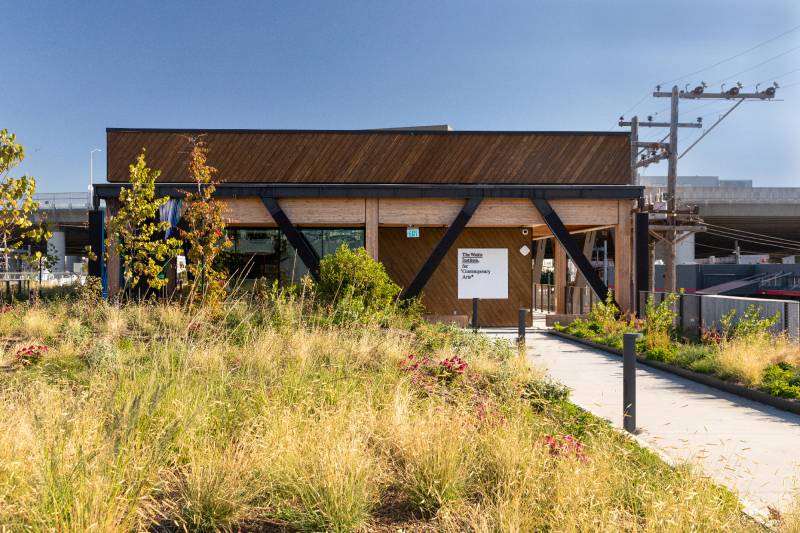
I loved the Wattis for bringing ambitious programming to a location a bit off the beaten path. It was a hidden gem in the no-man’s land between the Mission and the Dogpatch.
Now, the Wattis has reopened, smack in the middle of CCA’s newly unified campus in San Francisco’s Design District. (The school closed its storied Oakland campus in 2022.) Though the campus opening coincides with the recent announcement of a $20 million deficit, the new buildings are an impressive network of studios and classrooms, with the Wattis overlooking rooftop gardens and an amphitheater.
The Wattis is also under new leadership, with longtime director Anthony Huberman passing the torch to Daisy Nam, who comes to San Francisco by way of Ballroom Marfa and Harvard’s Carpenter Center.
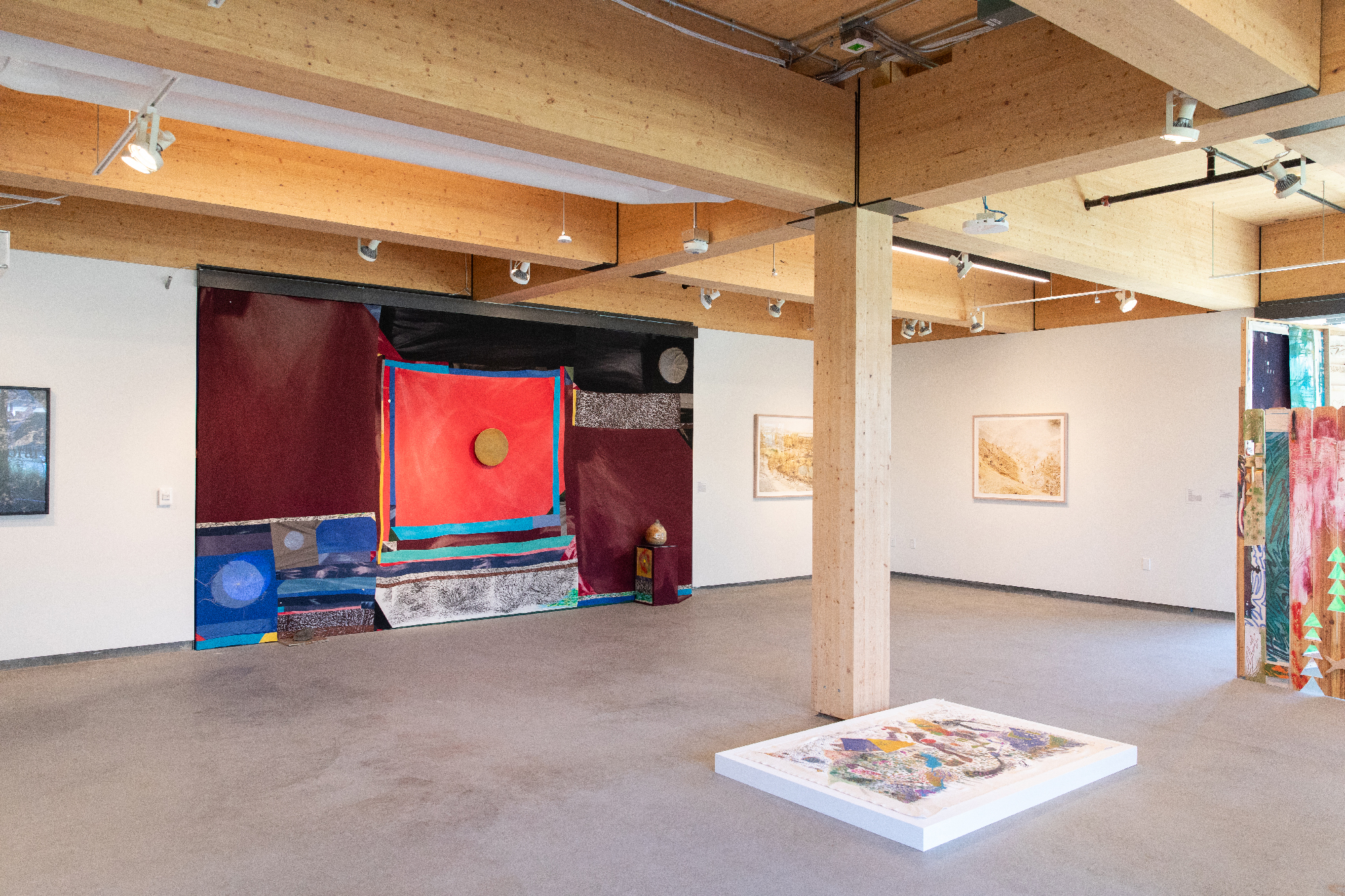
So what better way is there to inaugurate the Wattis Institute’s new home than with an exhibition tapping artists with Bay Area ties whose work examines the concept of place?
All This Soft Wild Buzzing, curated by Deputy Director and Director of Programs Jeanne Gerrity, features artists re-evaluating and re-mixing the legacy of landscape art. With particular attention to the American West, the show confronts and counters historical associations with Manifest Destiny that once undergirded the colonial framework of the landscape genre.
The group show features nine artists, including CCA alumni Saif Azzuz, Teresa Baker, Christopher Robin Duncan, Bessma Khalaf and Dionne Lee, alongside Nicki Green, Young Suh, Stephanie Syjuco and Zekarias Musele Thompson, working across disciplines that include sculpture, painting, installation and video.
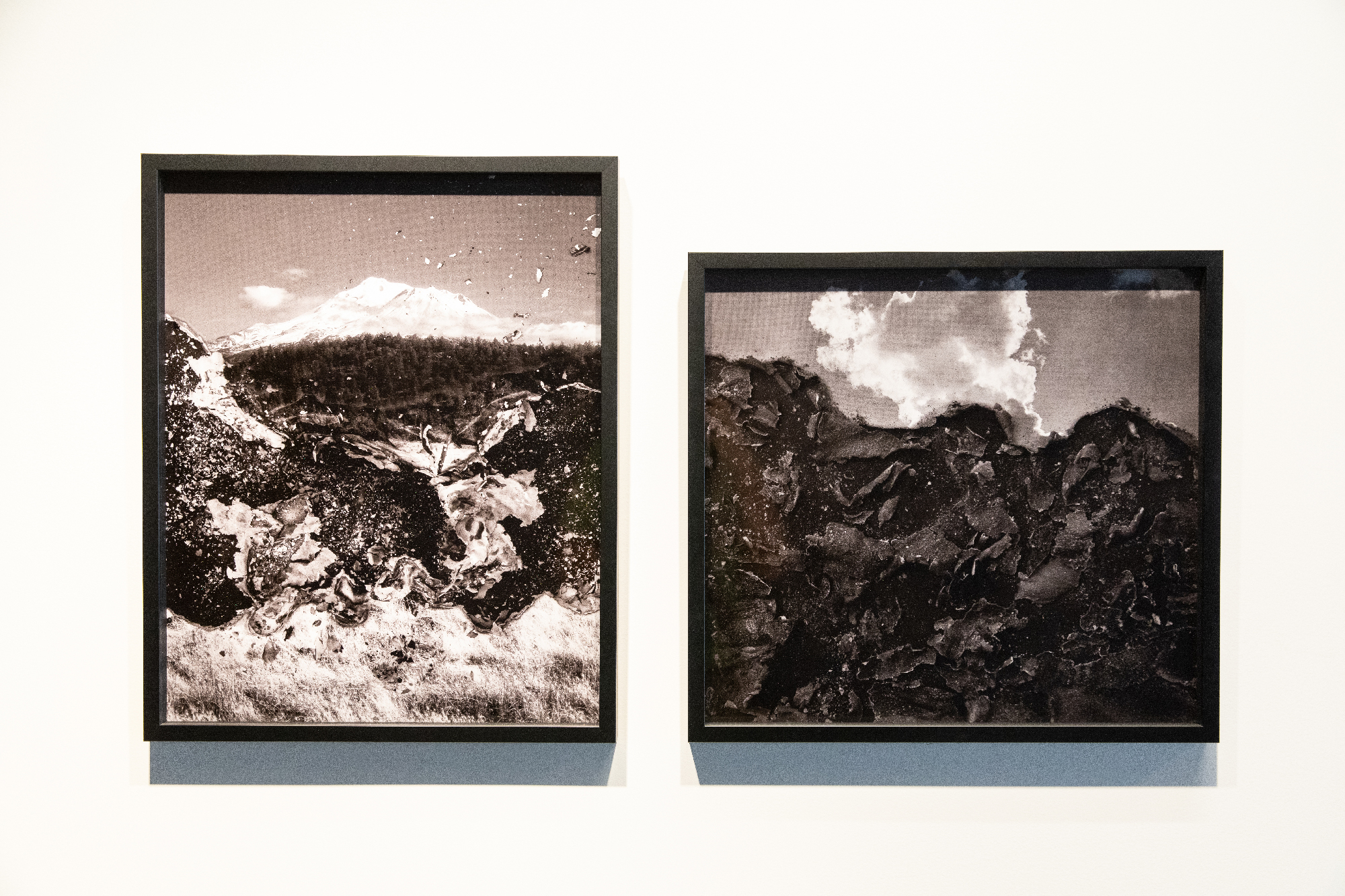
True to Gerrity’s vision, each artist takes a different, unorthodox approach to landscape art. You won’t see pastoral paintings or panoramic photographs here. Instead, it all feels more hands-on: not exalting the sublime from a reverent, if safe, distance but instead wading in up to the neck and getting hands dirty. These artists are exploring nature with a sensibility that foregrounds collaboration and reciprocity.
Khalaf’s are some of the most traditional landscapes in the show — at least at a glance, they appear to be. The black-and-white photographs are actually pictures of pictures sourced from magazines and books, which Khalaf photographs after partially burning them. Similarly, Suh’s color photos of the mechanizations of environmental disaster might qualify as agrarian landscapes — if it weren’t for the figures of firefighters trawling like ants across the scorched earth. Both artists play in the space between beauty and destruction, between nature’s course and the human intervention that both interrupts and accelerates it.
Lee, who recently exhibited in the Whitney Biennial, contributes a multichannel video installation of footage shot in and about the American Southwest. Grayscale landscapes are spliced with fragments of Bureau of Land Management signage at the entrance to national parks admonishing viewers to “Notice: You are on federal lands,” while Lee reads excerpts from “Observations on the Ground” by Mary Ruefle. Here, nature is all cerebral experience: a navigation not of the land itself but the human impositions that govern it.
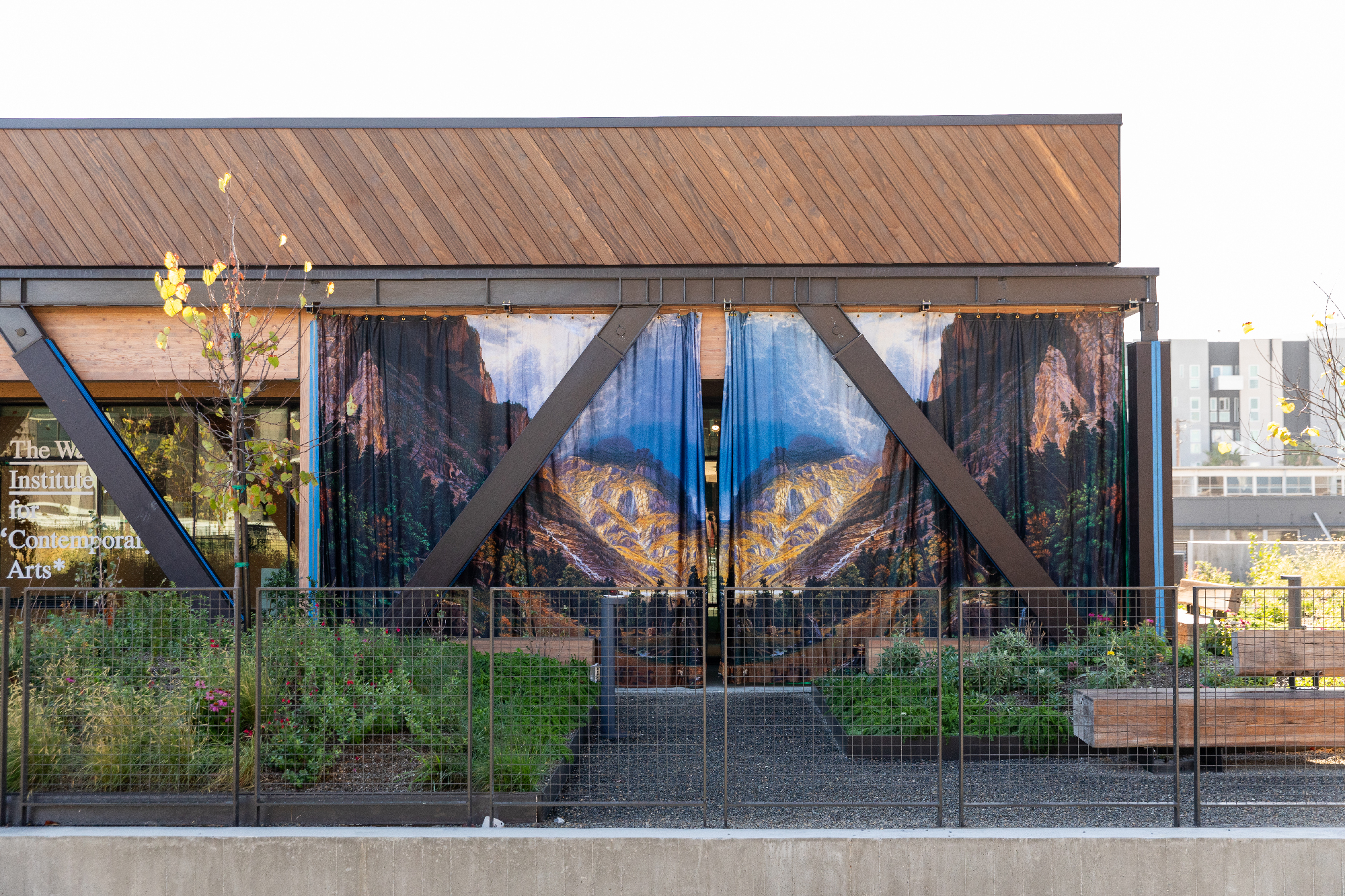
In a more direct engagement with nature, Duncan employed a photogram process to treat fabric he then exposed to sunlight on the rooftop of the old Wattis location. The finished piece acts as both a collaboration with nature and a relic of the venue’s history of place. Syjuco, in turn, has used fabric to activate the new gallery, draping curtains across the exterior that feature reinterpretations of American landscape painter Albert Bierstadt’s 19th-nineteenth century lithograph prints.
Similar outdoor activations will be a mainstay of future exhibitions, as well as special commissions that take advantage of the Wattis’ proximity to CCA’s fabrication studios. And while the new location certainly opens the doors for certain possibilities, it also closes doors to others. Because while All This Soft Wild Buzzing explores the expanse of nature, spilling into the school’s outdoor spaces, that sprawl feels out of necessity rather than curatorial panache.
The old Wattis boasted a larger square footage, much higher ceilings and an open floor plan that could accommodate a variety of curatorial visions. It was expansive, pregnant with possibility. There’s something about the Wattis’ new home that feels limiting.
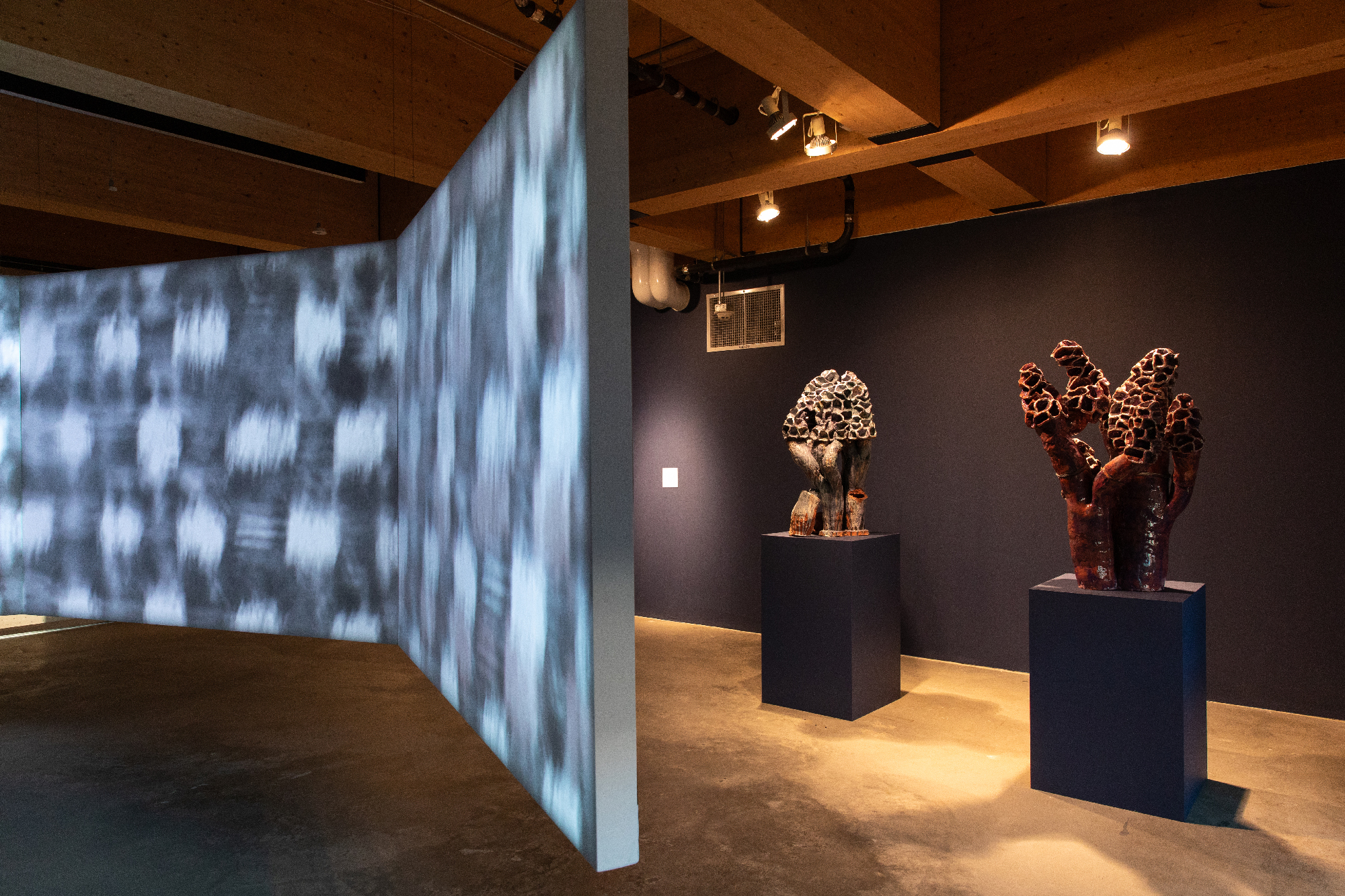
Maybe it’s the separation of the space’s two discrete galleries by the narrow hallway accommodating an elevator shaft. Maybe it’s the fact that three of the gallery’s walls are made of glass, restricting the ability to display wall-hanging artworks. Maybe it’s the on-campus nature itself that feels claustrophobic (though there is potential for commingling between the student body and the larger Bay Area art scene).
While the Wattis’ inaugural show feels like a celebration of Bay Area art and landscape, unified by a strong curatorial vision, I keep thinking how it could have been better served in the old space, with more room to unfold both in situ and within the community. The old Wattis had a decade to explore the space it occupied. It remains to be seen how the Wattis team plays within, and expands beyond, its current confines.
‘All This Soft Wild Buzzing’ is on view at the Wattis Institute (145 Hooper St., San Francisco), through Dec. 14, 2024.

